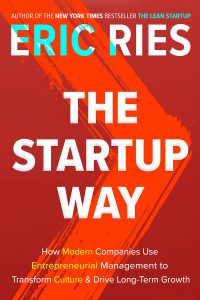
Established organizations often lack the ability to act and execute new ideas, being burdened with layers of bureaucracy that have mounted over many years. Nobody is accountable for dealing with uncertainty. Rather, a modern organisation should acknowledge entrepreneurship as a core discipline.
Everything faced by a modern company cannot be controlled by an internal startup system, but it is the best way to tackle uncertainty.
These internal units combine elements of R&D, sales and marketing, and engineering. They have no logical structure in a traditional organisation-chart. The entrepreneurial function is to manage these internal startups.
It also assists other functions of the organization in doing their work more productively. Conventional management tools are focused on planning and forecasting. Identifying and managing entrepreneurs demands a new form of leadership.
# Key Takeaways:
– The startup way emphasizes the importance of continuous innovation and experimentation in businesses.
– It introduces the concept of “startup thinking” which involves being agile, customer-centric, and data-driven.
– The book highlights the need for a strong culture of innovation and collaboration within organizations.
– It also discusses the role of leadership in fostering a startup mindset and driving change within traditional companies.
# Practical Application:
– The concepts and strategies presented in The startup way can be applied in real-world scenarios by adopting a lean startup approach, where small experiments are conducted to test ideas and gather feedback from customers.
– Companies can also create cross-functional teams and encourage a culture of collaboration and risk-taking to foster innovation.
– The book also suggests implementing a “startup board” within traditional companies to oversee and support innovation initiatives.
# Valuable Insights for Leaders:
– Chapter 3, “The Startup Mindset,” offers valuable insights for leaders on how to cultivate a culture of innovation and experimentation within their organizations.
– Chapter 5, “The Startup Board,” provides practical guidance on how to set up a board that can support and drive innovation within a company.
– Chapter 7, “The Startup Way of Working,” discusses the importance of agile methodologies and continuous learning in driving innovation.
# Case Studies and Examples:
– The book includes case studies from companies like GE, Intuit, and Amazon, which effectively illustrate the principles of The startup way in action.
– The example of GE’s transformation from a traditional company to a lean startup is particularly insightful.
– The book also includes examples of startups that have successfully disrupted traditional industries, such as Airbnb and Uber.
Leave a Reply